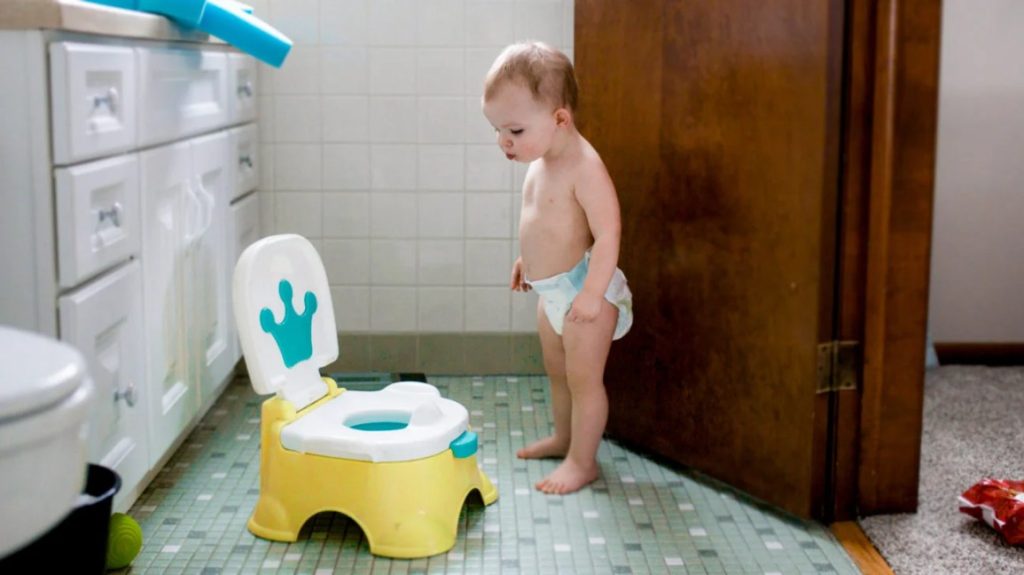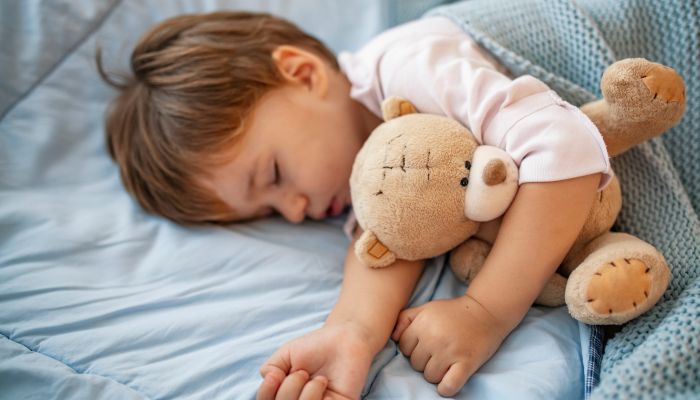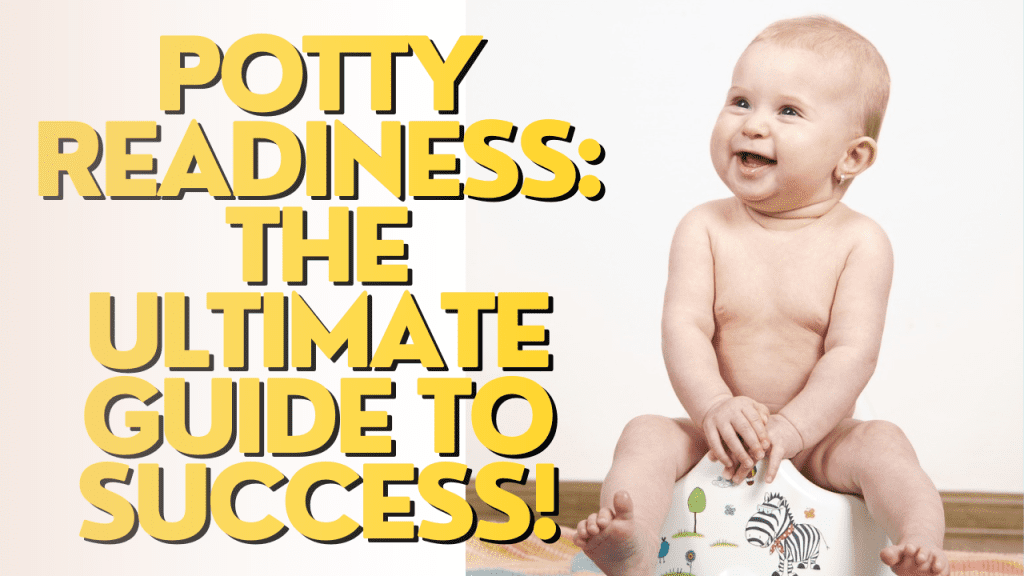The three-day potty training method is a successful approach that involves keeping your child diaper and pants-free for three days to help them get used to using the potty regularly, promoting awareness of bodily cues. This method, along with child-oriented techniques, is popular among parents who want their child to be potty trained quickly.
It is most effective when the child is at least 22 months old. Potty training is an important milestone for children, and choosing the right method can make the process easier and more successful. We will explore different potty training methods and discuss which one might be best for your child.


Credit: www.healthline.com
1. Introduction To Potty Training Methods
Potty training is an essential milestone in a child’s development. It helps them become independent and confident in using the toilet. Successful potty training has numerous benefits, including saving money on diapers, promoting better hygiene, and reducing the risk of urinary tract infections.
Additionally, it can also improve the child’s self-esteem and enhance their overall development. There are various methods of potty training available, such as the three-day method, child-oriented methods, and positive reinforcement techniques. Each method has its own advantages and may work differently for each child.
It is important to choose a method that suits your child’s needs and personality. With patience, consistency, and a positive attitude, potty training can be a smooth and successful process for both parents and children.
2. Understanding The Three-Day Potty Training Method
The child will quickly learn to recognize the sensation of needing to use the bathroom and will be able to hold it and make it to the potty in time. The success rate of this method is quite high, with many parents reporting that their child was fully potty trained within three days.
Research from 2003 also supports the effectiveness of this method, along with other child-oriented methods. It is important to note that this method is most effective when the child is at least 22 months old. Overall, the three-day potty training method offers a quick and efficient way to potty train your child.
3. Child-Oriented Potty Training Methods
Using this method, your child will quickly develop the habit of using the potty. This approach involves a gentle and gradual introduction to potty training. It focuses on addressing the individual needs and readiness signs of each child. The child-oriented potty training methods take into account the unique characteristics of your child, such as their temperament and personality.
This method emphasizes patience and understanding, allowing your child to take the lead in their potty training journey. By following a child-oriented approach, you create a positive and supportive environment that encourages your child to develop their independence and confidence in using the potty.
This method recognizes that every child is different and may require varying levels of support and encouragement during the potty training process.
4. Traditional Potty Training Methods
Overview of traditional potty training methods: traditional potty training methods involve a structured and consistent approach to help children learn to use the toilet. These methods often rely on rewards and incentives to motivate children to use the potty successfully.
Parents and caregivers provide guidance and support throughout the process to ensure consistency and reinforce positive behavior. Traditional methods have been used for many years and have proven to be effective in toilet training children. They emphasize teaching children the necessary skills and behaviors to use the toilet independently.
By following a structured approach and providing rewards and incentives, children can learn and master the essential skills of potty training.
5. Combination Potty Training Methods
Combination potty training methods involve combining different approaches to find what works best for your child. This method allows for customization based on your child’s specific needs, ensuring a more tailored approach. One of the advantages of combining methods is the flexibility and adaptability it offers.
You can switch between different techniques as necessary or even create your own unique method that incorporates various strategies. By being open to different approaches and adjusting as needed, you can increase the chances of success in potty training your child.
Remember, every child is different, so it’s important to be flexible and adaptable throughout the process.
6. Common Challenges And Troubleshooting
Dealing with setbacks and accidents can be frustrating during potty training. Resistance and refusal may occur when a child is not ready for the process. However, there are tips for overcoming these common challenges. One strategy is to remain patient and understanding, as accidents are a normal part of the learning process.
It is important to avoid punishment and instead provide positive reinforcement for successful attempts. Consistency is key, so sticking to a routine and schedule can help establish good habits. Additionally, offering incentives or rewards can motivate the child to use the potty.
Remember that every child is different, so it is important to be flexible and adapt to their needs and progress. By troubleshooting setbacks and providing support, potty training can become a successful and positive experience for both the child and parent.
7. Choosing The Right Potty Training Method For Your Child
Choosing the right potty training method for your child can be a challenging decision. Factors to consider when selecting a method include understanding your child’s temperament and learning style. Each child is unique, and what works for one may not work for another.
Consulting with pediatricians and experts in child development can provide valuable insights and guidance. They can help you identify the most suitable approach based on your child’s individual needs and preferences. By taking into account these factors, you can ensure a successful and effective potty training experience for your child.
Remember, patience and consistency are key, and with the right method, your child will be on their way to independent potty use in no time.
8. Potty Training Tips And Techniques
The three-day potty training method is a popular choice for parents who want quick results. Research suggests that this method, along with child-oriented approaches, is highly successful. It involves keeping your child diaper- and pants-free for three days while they get accustomed to using the potty consistently.
The goal is to create a positive potty training environment by establishing a routine and schedule. This helps your child understand when they need to use the bathroom. Consistency is key to successful potty training, so it’s important to stick to the established routine.
By following these strategies, you can create a positive and consistent potty training experience for your child.
9. Maintaining Good Bathroom Habits
Child without diapers or pants, they will become more aware of their bodily cues and learn to use the potty consistently. This method focuses on creating a routine and establishing good bathroom habits by encouraging independence and self-care. It also emphasizes teaching cleanliness and hygiene practices, as well as transitioning to using public restrooms.
While this method can be effective for some children, it’s important to remember that every child is unique and may respond better to different potty training approaches. It’s essential to be patient, consistent, and supportive during the potty training process, regardless of the method chosen.
10. Celebrating Success And Milestones
Ed and providing frequent opportunities to use the potty, they will quickly learn the connection between the feeling of needing to go and using the toilet. Celebrating your child’s success and milestones during this process is crucial. Recognize their achievements with praise and rewards, reinforcing positive behavior.
This will encourage their independence and build their confidence in their ability to use the potty. By creating a positive and supportive environment, you can make the potty training experience more enjoyable for your child and increase their chances of success.
Frequently Asked Questions Of Potty Training Methods
What Is The Best Potty Training Method?
The three-day potty training method is considered one of the best approaches. It involves keeping your child diaper-free and pants-free for three days, allowing them to become more aware of their bodily cues and learn to use the potty regularly.
This method is particularly popular among parents who want their child to be potty trained quickly. It is recommended for children who are at least 22 months old. Research from 2003 supports the effectiveness of this method, along with child-oriented approaches.
By following the three-day potty training method, you can help your child develop the necessary skills to use the toilet.
What Is The 3 Day Potty Training Method?
The 3-day potty training method is a process where your child goes without diapers and pants for three days to learn to use the potty consistently. By keeping your toddler bottomless, they become more aware of their bodily signals, making it easier for them to learn to use the toilet.
This method is popular among parents who want a quick way to potty train their child. It is most effective when the child is at least 22 months old. Research from 2003 suggests that the 3-day method, along with child-oriented methods, has a high success rate.
By following this approach, you can help your child transition from diapers to using the potty in just a few days.
What Is The Best Method For Potty Training A 2-Year Old?
The three-day potty training method is considered the best approach for potty training a 2-year-old. This method involves keeping your child diaper-free and pants-free for three consecutive days while staying at home. By not wearing any bottoms, the child becomes more aware of their bodily cues and is encouraged to use the potty regularly.
This technique aims to help the child become more attuned to their own needs and signals. Research from 2003 has indicated that the three-day potty training method, along with child-oriented methods, has proven to be highly successful. It is particularly popular among parents who want their child to be potty trained quickly.
This method usually works best for children who are at least 22 months old. By following this approach, parents can effectively and efficiently train their 2-year-olds to use the toilet.
What Is The Fastest Way To Potty Train?
The fastest way to potty train is through the 3-day potty training method. This method involves keeping your child diaper and pants-free for three days in the house, allowing them to become accustomed to using the potty regularly. By remaining naked from the waist down, your toddler becomes more aware of their bodily cues and learns to use the potty independently.
This method is particularly effective for children who are at least 22 months old and is a popular choice for parents who want their child to be potty trained quickly. Research from 2003 indicates that the 3-day method, along with child-oriented approaches, is among the most successful potty training methods available.
Implementing this method can help your child achieve potty training success in a short period of time.
Conclusion
Potty training is a significant milestone for both children and parents, and choosing the right method is crucial for success. Throughout this blog post, we have explored various potty training methods and their effectiveness. From the research, it is clear that the three-day potty training method, along with child-oriented methods, has proven to be highly successful.
By allowing your child to go diaper- and pants-free for three days, they become more aware of their bodily cues and learn to use the potty regularly. However, it’s important to note that every child is unique, and what works for one may not work for another.
The key is to be patient, consistent, and supportive during the potty training process. Remember, accidents are normal and part of the learning journey. By understanding your child’s needs and providing a positive and encouraging environment, you can make potty training a smooth and successful experience for both you and your little one.



